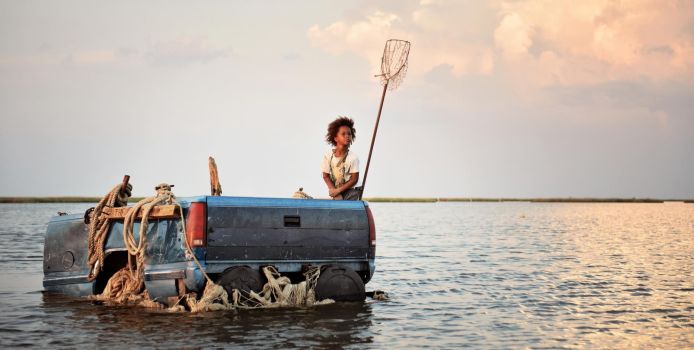The American Southern: The Birth of a Modern Independent Film Genre

Adam is a filmmaker based out of Philadelphia, PA and…
“These men who bust their asses work like dogs. And I believe in them, but every day they hurt. They get old, they peel back… There’s no frontier anymore.” These words uttered by the titular character, played by a never-better Nicolas Cage, in David Gordon Green’s 2013 film Joe conjure a feeling shared by numerous American Independent films as of late: The western is dead and in its place are films about real people not trying to chase the American Dream, but rather simply trying to make it along without stumbling.
The Indie South
These films, which I’ve taken to calling “Southerns” based on the common locale and intimate look at its colorful, accented people shared by these films, are flourishing within the Indie film scene. Critical hits like Mud, Beasts of the Southern Wild, Winter’s Bone and the aforementioned Joe all fit within this budding trend and forming what could be America’s next great genre. The trend has even bled over into television with the immensely critically successful True Detective on HBO.

Location aside, these films often share hard truths about modern America in areas of extreme poverty. Alcoholism and drug use is rampant. The stiff will commonly portrayed in older generations is shattered. People work hard for very little and families are often broken. Witness to this all are youth trying desperately to break a cycle, but still tied to the only life they’ve known.
Form commonly matches content as the cinematography is often juxtaposing the brutal, beautiful natural world with the degradation of the human body in these environments. Human skin is never pristine and often displays a rust-like quality seen on old abandoned cars. Hands are cracked like old wood. The triumph of these films are in displaying this with such brutal realism. The soundtracks often feature a simplistic authentic sound true to the blues and jazz, which, like the Western, are uniquely American art forms. These elements combine to form raw emotion. The pinnacle of these elements can be found in Beasts of the Southern Wild, one of the best directed films in the last 20 years and a true goal that any of these Southerns hope to reach for.

Raw emotion is the subject of the character studies in these films. Strong, improv-influenced performances by veteran actors like Matthew McConaughey (Mud), Nicolas Cage (Joe), and John Hawkes (Winter’s Bone) are often accompanied by unbelievably good performances by young blossoming actors like Tye Sheridan (Mud and Joe) and Jennifer Lawrence (Winter’s Bone). It is also common for non-actors to take up major roles in these films. Dwight Henry (Beasts of the Southern Wild) and the late Gary Poulter (Joe) are true standouts. Both never had aspirations of being actors. These non-actors cast another layer of realism that grounds these films.
While the Western was all about the hero and the frontier, the Southern is all about breaking down these heroes and seeing the empty promise of the American Dream. The Southern is a direct response to the dream many were promised: Nature can be conquered and man can become the best he can be. The reality of the Southern is that nature is brutal and can break people. The floods of Beasts of the Southern Wild, the snakes of Mud, and the sprawling forests of Joe are all forces that push people to the brink of personal and economic survival.
For all the things that put the Southern at odds with the Western, they still share many similarities. Nature is a character, guns are commonplace. At his best, Nicolas Cage’s Joe exhibits the same strong will and flaws as John Wayne’s Tom Doniphon in John Ford’s masterpiece The Man Who Shot Liberty Valence, a film which saw the death of the Western coming down like a steam train. The way a Louisiana swamp is treated is strikingly similar to Monument Valley in many of Ford’s films.
An Auteur Driven Future
As valuable as the Western was at viewing our own expectations and desires about the American dream, the Southern can help us explore where that expectation led us and where we will go as a society. This introspective viewpoint has always defined the great genres of the past. Whether we are in the middle of a new great American genre or simply a small trend has yet to be seen. These movements are always defined in retrospect, however with the likes of indie auteur’s David Gordon Green, Benh Zeitlin, and Jeff Nichols exploring these shared themes of the great American south, we may look back at this time as the beginning of something truly great.
What do you think? Post your thoughts and examples of the Southern in the comments below!
(top image: Beasts of the Southern Wild – source: Fox Searchlight Pictures)
Does content like this matter to you?
Become a Member and support film journalism. Unlock access to all of Film Inquiry`s great articles. Join a community of like-minded readers who are passionate about cinema - get access to our private members Network, give back to independent filmmakers, and more.
Adam is a filmmaker based out of Philadelphia, PA and a contributing writer for Film Inquiry. His work includes award winning shorts "The Witmans" and "Pine Tree"













